Can you use flour 2 years out of date?
Jump To:
You’re likely to use flour less often than you think unless you are a pro baker or a chef. You might as well end up noticing a packet of flour at the backside in your kitchen pantry. Can you use flour 2 years out of date? Can flour go bad? Let’s find out! Not just flour! Find more on how to store food.
Unless it is directly purchased from a mill, the flour comes with a date printed on the label. It’s unlikely that the flour will spoil after a few days or months of the expiry date. Well, there’s a difference between spoiled flour and expired flour! Yes, you can use the flour two years out of date, but only in some special cases.
- Many packaged flours are labeled with expiration dates to indicate how long they will keep fresh. These labels don’t have to be mandatorily signifying the safety of using a particular product.
- Spoiled flour won’t likely make you sick if you eat it in small quantities for checking if it is safe for baking or consumed accidentally.
- It won’t ruin the taste of your baked goods if its expiry date has lapsed for just a few months.
- It is best to throw away 2-year-old flour that is stored at room temperature, even if there are no visible signs of spoilage.
Shelf Life Of Flour – Can flour go bad?
Although most types of flour are good for cooking, they can all go bad. Here is everything you need to know about the shelf life of the flour.
Note that this article does not cover nut flours such as almond flour and coconut flour. These flours need different analyses and conclusions for their respective shelf lives in different forms.
Whole Grain Flour
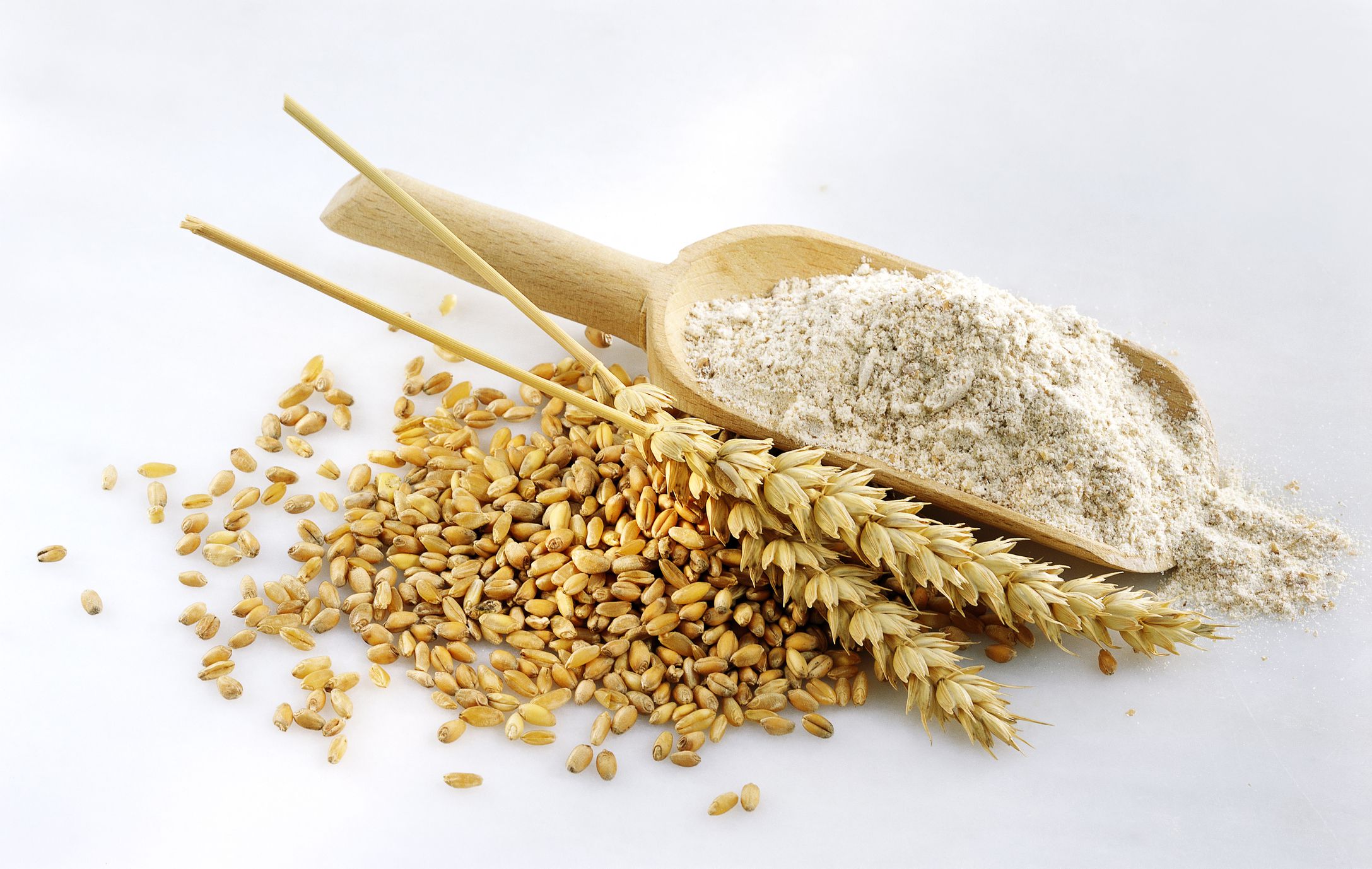
- Whole grain refers to flour that contains all three components of the grain, the endosperm, and bran as well as the germ. Bran and germ are rich in fats, which can lead to rancidification.
- Although you won’t get sick if you eat baked goods made from expired and bad whole grains flour, they will not taste as good when you make them with fresh flour. The final good might end up smelling rancid as well.
- Properly stored in airtight containers, most whole grains flour meals will last for up 2 to 3 months on a dry, cool shelf, or 2 to 6 months in the freezer.
Refined Flour
- Most flours made from refined grains contain only the endosperm. They are therefore fat-free and not at risk of becoming rancid.
- It can be used for stress-free weekend baking, even if the smell is not very fresh. Think twice before you use whole-grain flour half a year old to make a cake for an important event.
Self Rising Flour
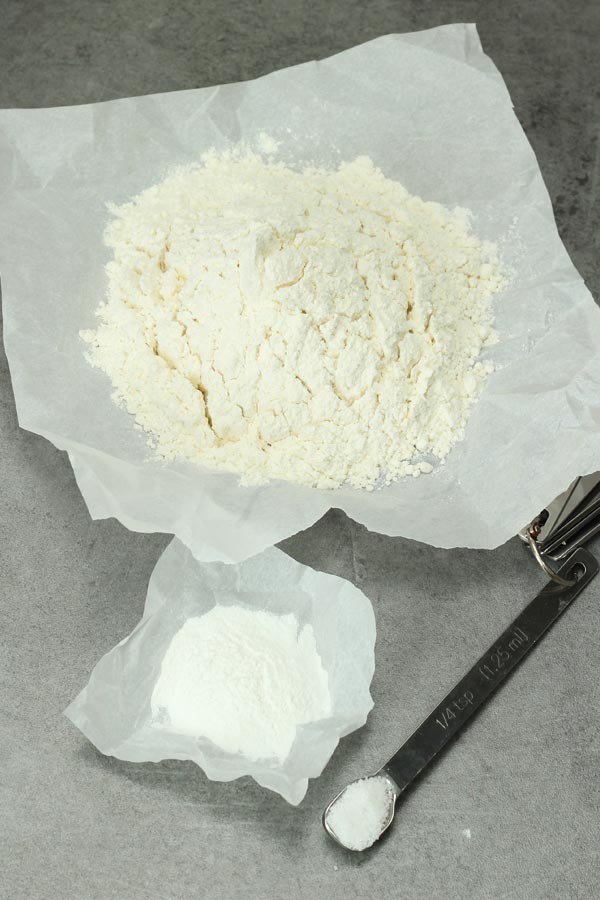
Self-raising flour refers to flour that has been mixed with leavening agents. It is important to note that leavening agents such as baking flour, won’t keep their potency forever.
- Baked goods made from self-raising flour that is more than two years old may not rise as well.
- You can test this by using the leavening agent in a recipe that doesn’t require a lot of power, such as pancakes. It’s not usually a big deal if the pancakes come out flat! They are still delicious!
- White flour, including all-purpose and self-rising flours, should be thrown out after 6 months if stored at room temperature. The flour can be kept in the fridge for one year and frozen for two years.
Storage Tips And Techniques For Flour – How to Store Flour?
How to store flour? Well, let’s begin with the basics. It doesn’t matter if your flour is gluten-free, whole grain, bread, all-purpose, or another flour. You need to keep it safe from moisture and bugs.
At Room Temperature
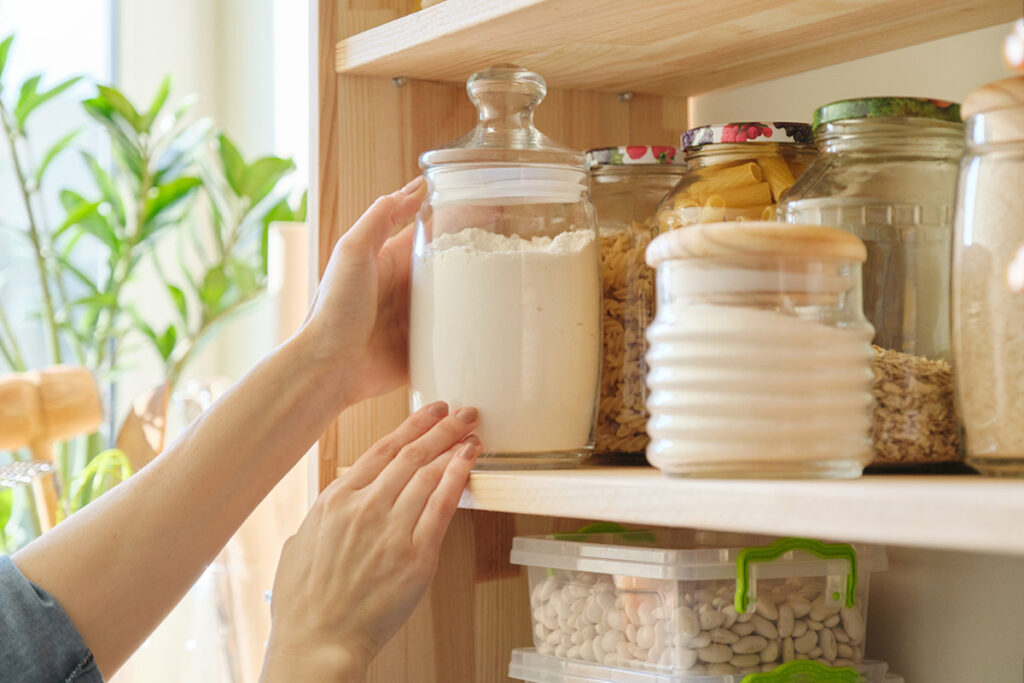
- Mostly any type of flour is packaged in a paper bag. If it’s dry and free from bugs and moisture, it’s fine to be used for long term. After each use, simply roll the top down and clip it.
- You can increase your flour shelf life by transferring the powder to an airtight container. There is very little chance that the flour will get into contact with water or bugs.
- It all depends on how tightly you seal the container and the cleanliness of the area.
Refrigeration And Freezing
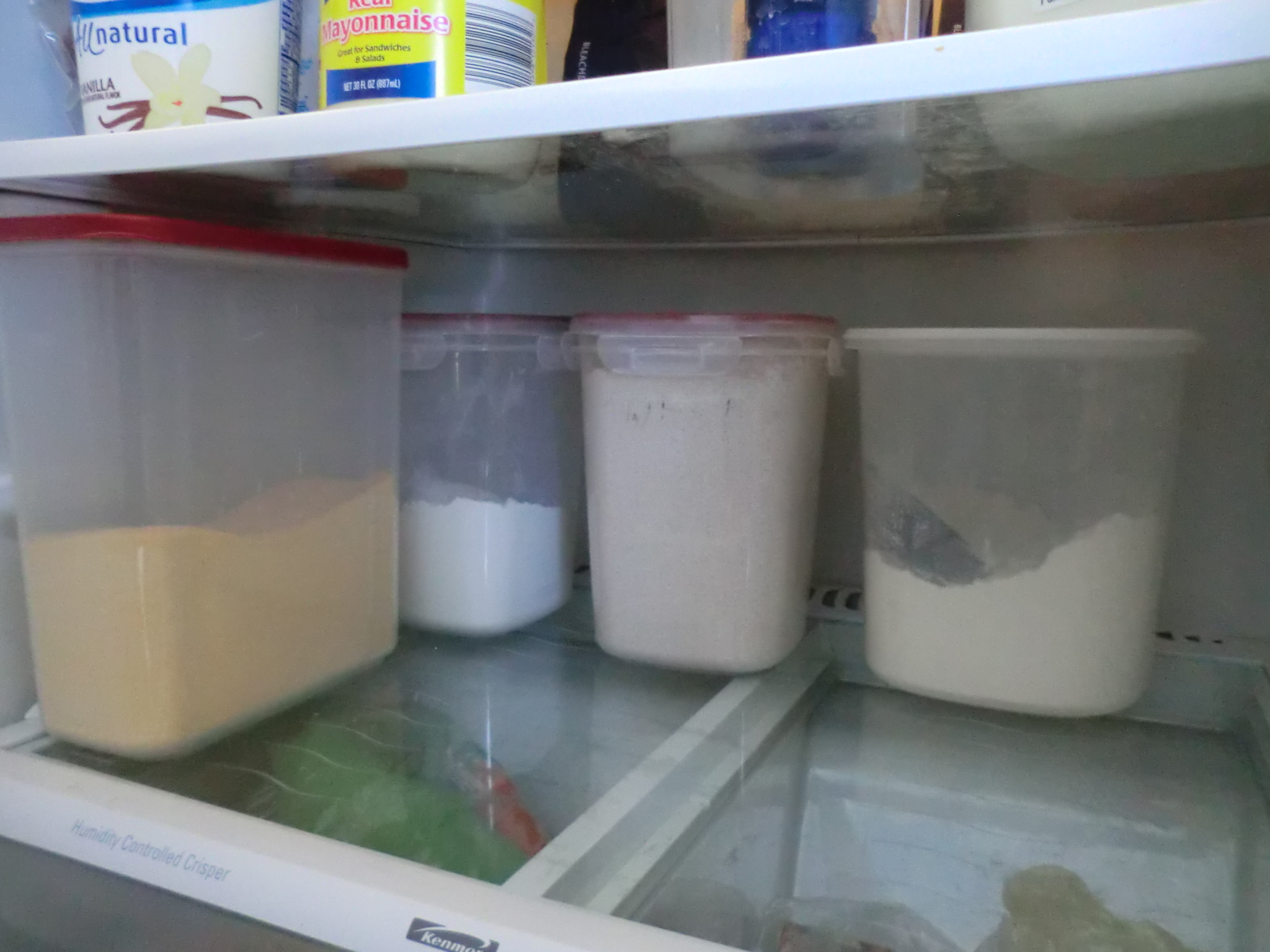
Long-term storage of any food product is a common concern. Many baking experts suggest refrigerating or freezing products. These measures will help preserve quality for longer. But, honestly, it is very rare to see someone refrigerating or freezing flour.
- Most of us don’t have the space in our fridges or freezers to store foods that will keep good at room temperature. It’s not worth the effort to store flour in the freezer or fridge.
- You can try it out if you bought a lot of flour on sale and found no other way than refrigerating it for keeping it safe for later use.
- Make sure to transfer the flour into an airtight container that is moistureproof so it doesn’t absorb water from the sides of the fridge and odors from other food products stored in the fridge.
Signs Of Spoilage For Flour – How to tell if flour has gone bad?
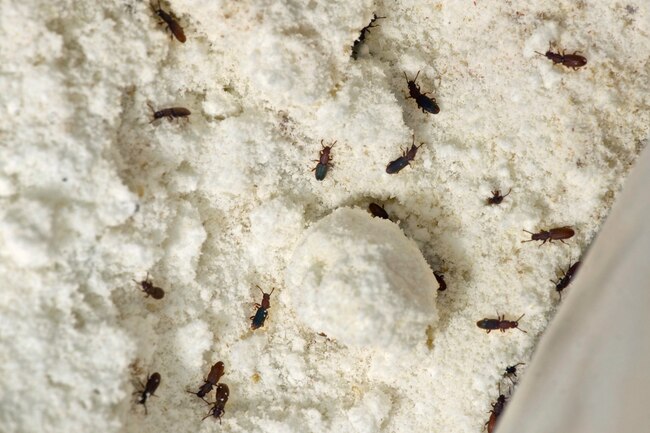
These are the signs that your flour is not safe to use:
- Mold. The flour can become moldy if it gets into contact with moisture. You should throw out the pack if you see any mold.
- Musty, rancid, or sour odor. Throw it away if you notice any different and off smell from the flour. You should always give your expired whole grain flour a good sniff before you use it. This is because this variety can become rancid.
- Pantry insects. If the flour is infested with larvae or living bugs, such as pantry pests or corpses, it is not recommended to use it by removing the bugs or other contaminants.
Key Takeaways
- Flour can last for 6-8 months in good quality.
- Pay attention to the quality of self-rising and whole-grain flours. The latter can become rancid while the former loses its potency.
- If flour is exposed to moisture or pantry bugs, remove the lumps that are formed and transfer it to an airtight container.
- Many sources suggest freezing or refrigerating long-term flour storage. However, this is probably not worth the effort.
